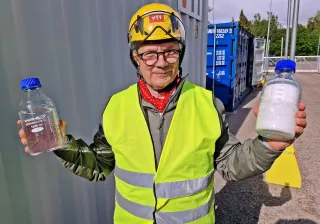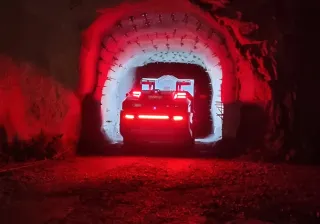The vehicles currently on the market already have many automation-enabled functions, such as lane assistance and even autopilots. These functions are vulnerable, however, to varying weather conditions – an issue that is now being tackled through extensive international cooperation that is paving the way for safer and better automation. The aim is to create an environmental observation system, supported by artificial intelligence, which enables driving in poor weather conditions. To reduce the impact of weather conditions on the sensors, data is utilised to modify the operation of the sensors. The result is a system that operates effectively in different illumination and weather conditions.
Vehicle automation is a topic that has interesteds a lot of people already for more than 30 years, but full automation is still quite far in the future. In order to be brought onto the market, autonomous vehicles must operate reliably in all possible circumstances, but this cannot be achieved without artificial intelligence. Current automation has already taken big leaps forward, for example by enabling driving between lane markers and even automated overtaking. However, when the lane markers are covered with snow or dirt, or if fog impairs visibility, this function must be switched completely off.
"The sensors to be developed in our project and their data processing capabilities are something completely new, and they will send the existing car radar and cameras to the museum archives," says Research Team Leader Matti Kutila from the VTT Technical Research Centre of Finland Ltd.
The AI-SEE project is an international research project coordinated by Mercedes Benz AG. Finnish and Nordic excellence plays an important role, as northern weather conditions differ significantly from Central Europe. Finnish expertise in the project is strong – in addition to the VTT, there is also software company Unikie developing autonomous driving technology, Basemark offering software development tools, Meluta specialising in signal processing, and Patria, which is putting the solutions of the vehicle industry to the test in off-road conditions.
Automation provides concrete assistance to the driver
The project aims at creating an automated driving system suitable for all road conditions – system that guarantees safe travel even when weather and lighting limit the ability of sensors to detect their surroundings. These conditions include heavy rainfall, dense fog and snow, and cover all the different seasons and times of day or night.
Purpose is not only to safeguard the operation of sensors regardless of weather conditions but also to enable limited automation. Even if lane markers are not visible, the capacity for limited automation means that you can drive at a reduced speed without having to switch off automation completely. Safety is also increased by shifting from low to high resolution sensors. On the other hand, this also makes it easier to remotely detect even small objects, which prevents strong emergency braking and thus increases driving comfort and reduces risks such as rear-end collisions.
The functionality and reliability of automatic vehicles depends on the prevailing conditions and the driving location. The urban environment differs from the countryside, for example, which the latter not necessarily having any lane markers. Automation has different levels, and the appropriate level is selected by the driver. At the lowest levels, the driver is responsible for driving and decision-making, but the vehicle can support the driver where needed in areas such as staying in lane. At higher levels of automation, decision-making and responsibility are transferred to the vehicle control systems. Finally, one day in future humans only enjoy free mobility without any driving intervention duties.
Aiming for a competitive edge
The previous project, DENSE-EU-ECSEL, came to an end in February 2020. It succeeded in creating significantly more advanced systems for environmental observation. The AI-SEE project continues sensor development for the handling of poor road conditions. The project is developing AI-based algorithms for the processing of sensor data, with the artificial intelligence being used to try to eliminate false observations. The sensor data helps to create a better situational picture for the vehicle.
The results of this project will not only save time and development costs but also enhance Europe's competitiveness, as the project will accelerate the arrival to market of L4 automation by 2030. The aim is to succeed against the strong international competition and be among the first to market.
Further information on the project:
The AI-SEE project started in June 2021 and will run for three years. The project is being coordinated by Mercedes Benz AG and includes 21 partners consisting of research institutes, car suppliers and various software companies. This is a project funded by Penta Euripides ² (ID: 2020008) and the budget is EUR 21.58 million. EURIPIDES ² is a EUREKA cluster that promotes the creation of innovative and industry-driven research and development projects in the field of smart electronic systems. The project is based on the earlier DENSE project and is funded in Finland by Business Finland.




